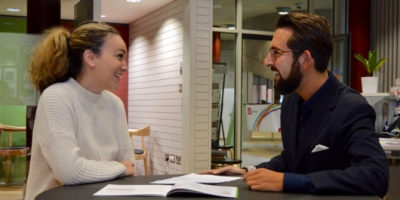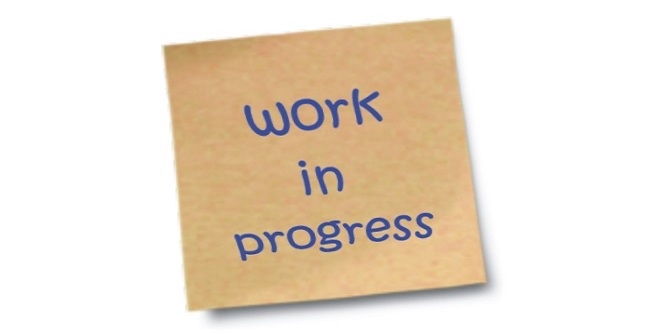Thousands of mutual aid groups have sprung up in the UK since 2020, but what do we know about them, and can they sustain volunteering after the pandemic is over? Professor Anne Power (Emeritus Professor of Social Policy) and Ellie Benton (MSc Social Policy Research, 2017 and Research Assistant at LSE Housing and Communities) suggest ways that local government could support them, and warn that they must not become a replacement for public services.
Ever since the start of the pandemic, there has been a huge surge in the “helping spirit”. People have wanted to help and play an active role in responding to the crisis. This is evident from the impressive number of volunteers: 750,000 people signed up to the NHS volunteer scheme, three times as many as expected and five times the number needed. There was also a surge in people signing up to local volunteer centres, with 250,000 people signing up in the first three weeks of lockdown.
Much of this voluntary activity contributed to a remarkable growth in the formation of mutual aid groups, as defined here:
A mutual aid group is a volunteer led initiative where groups of people in a particular area join together to support one another, meeting vital community needs without relying on official bodies. They do so in a way that prioritises those who are most vulnerable or otherwise unable to access help through regular channels.
There are now an estimated 4,300 mutual aid groups in the UK, with three million volunteers offering their support to people in their local community. Most of these groups have been set up since the outbreak of the pandemic.
The characteristics of mutual aid groups formed during the COVID-19 pandemic are that they:
- Appeal to people’s desire to help others in a crisis;
- Raise awareness of the people who are ill, short of basic necessities, elderly, and/or vulnerable;
- Run on an entirely voluntary basis.
Our research study aimed to uncover what drove the rapid development of voluntary neighbourhood and street level ‘mutual aid’ groups to support vulnerable, sick, elderly and socially isolated people. It also attempts to identify the forms of help that are most common, and the impact of this work. In total, 20 groups were selected, out of 70 contacted, representing different types and geographical locations, in order to understand better how such groups work and what difference they make
Forming a picture of the groups
Fifteen of the 20 groups were local support groups responding to individual needs on a one-to-one basis. They carried out tasks such as shopping, prescription pick-ups, and friendly phone calls. Six of the groups provided food, two of which provided food specifically for NHS staff and carers. Two made protective clothing (scrubs) for frontline workers. Two of the groups interviewed were existing organisations which had adapted and expanded their services to continue to support people during the pandemic. On average there were six volunteer organisers and 190 volunteer helpers per group. The two biggest groups, one with 800, and one with 700 volunteers, were both in London.
We asked the organisers and volunteers what motivated them to set up the groups. Four groups were motivated by an ambition to play an active role in helping people through the crisis. Two wanted to show their solidarity with, and support for, NHS staff and care workers. Two were motivated by religious beliefs driving their commitment to helping their neighbours. One volunteer wanted to show that young people do care and were not “irresponsible and reckless” or “breaking lockdown rules”. The time volunteers spent working with groups ranged from under five hours a week to more than full time.
It became clear that being part of a group bought benefits to the organisers and volunteers. It helped keep them busy during lockdown, when many routines were upturned, and gave them a sense of purpose.
I wanted to help because I suffer with poor mental health; and for me being involved in this and helping others actually helps me too by giving me a sense of purpose. –Volunteer, Dons Local Action Group
Roles played by the mutual aid groups
The people the groups help fall into four main categories: the elderly and people self-isolating due to health conditions, NHS and care workers, families, and homeless people. All the groups that offered one-to-one support adopted an open-ended approach to who they helped and did not have strict criteria; they offered support to anyone they felt needed it. This is a very different approach from more formal forms of support, which often require strict eligibility criteria.
In most cases, people who needed help contacted the groups directly. In some cases volunteers built up relationships with the person needing help and supported them on a weekly basis. In others, it involved one-off support with jobs such as gardening. Other groups delivered regular food packages and meals. The groups reported getting fewer requests for help as the first lockdown progressed. Interviewees suggested one explanation could be that people needing help had been paired with volunteers, and these relationships were continuing on a more personal level.
Group organisational structures and funding
Mutual aid groups are fairly informal with less checks and requirements than formal groups. Despite 18 of the groups being volunteer-led and set up very quickly, they all had clear management structures in place. Seventeen of the groups had a small management team who coordinated the volunteers and the outstanding tasks. The bigger groups divided into smaller teams, with each area having a team leader responsible for distributing tasks. Twelve of the groups received funding to support their work, half of whom received grants from the council or other local organisations; four fundraised and collected money online. Two groups received sponsorship from local businesses and one group was completely funded by the temple it was run from.
How the mutual aid groups plan to move forward
Nineteen of the groups wanted to continue supporting people after lockdown was lifted. However, all were planning to change how they were organised to adapt to new roles and challenges. Seven felt that the people they were supporting would need help in the longer term and that there was a gap in support for many people even before the pandemic. Due to their close community connections, the groups worked with people who would have needed support even before the lockdown. For this reason, they want to go on supporting them as they know these needs will continue. Other groups wanted to move into new areas of support, with four wanting to focus on tackling food poverty. They recognised the challenge of holding the groups together when people were able to go back to work and had less time available.
Policy implications
Mutual aid brings communities together and helps meet the needs of the most vulnerable in an informal, quick, responsive way. Therefore, it makes sense for wider policies to endorse their work, by providing support to ensure safety but not taking away from the volunteer-led nature of the groups…
Early research by the New Local Trust argues that the government’s shielding programme would not have been possible without the work of mutual aid groups. To continue to fulfil their role, they need both recognition and support. It is important that volunteer momentum is sustained, and that volunteers have the correct skills to run the groups successfully.
The mutual aid groups have said they want to continue providing support to people in the community. To do this they need to be self-sustaining both financially and in terms of membership. So far, they have generally lacked robust processes to account for funds and how they are used and have been reliant on one-off grants and fundraising to support their work. Groups need more stable sources of funding and clearer accounting to become sustainable in the long-term, especially as donations may reduce over time.
Mutual aid groups are also now having to deal with more complex issues such as housing, debt, and mental health problems — traditionally problems that public services and established charities would have dealt with. This suggests that existing local support structures do not currently have the capacity to provide help to all those who need it. This places a responsibility on local authorities to find ways to support mutual aid groups.
Mutual aid volunteers need guidance and training in understanding issues and identifying problems, but also in advising people to the best help available. In spite of their excellent work, mutual aid groups cannot become a replacement for public services and wider social infrastructure.
Consequently, training is an important tool to equip groups with essential know-how and to give volunteers the skills they need to meet need and manage the groups successfully. LSE Housing and Communities’ report, Private Action for the Public Good, highlighted the important role of training in providing social housing tenants with the skills, motivation, and support they need to organise and sustain community projects.
Currently, mutual aid groups are informal. They generally have few formal safeguarding policies, which help to protect both the groups’ members themselves and the people they are helping. Formalisation of these elements, safeguarding, and systems to manage funding, are often key requirements for the longer term. Local authorities and larger charities can help mutual aid groups with this process, but it needs careful handling to avoid undermining the way mutual aid groups operate. Some members are resistant to becoming more formalised, as it takes away from the “neighbour to neighbour” approach which allows them to respond quickly and informally to local issues. Policymakers need to find a balance between helping the groups formalise sufficiently to access funding, alongside having proper safeguarding policies in place, but without taking away from the self-help ethos the groups were founded on.
Mutual aid on its own is not enough to meet all the needs of a complex society. For a community to survive during the pandemic, it has to be able to rely on the support of wider social infrastructure, such as education, health, transport, housing and social services. The pandemic has shown us how important these statutory services are.. A wider policy environment that supports social infrastructure and the groups themselves will help mutual aid to thrive.
This post represents the views of the authors and not those of the COVID-19 blog, nor LSE. It is based on Benton, E. and Power, A., 2021. Community Responses to the Coronavirus Pandemic: How Mutual Aid Can Help. LSE Public Policy Review, 1(3).
Originally posted on the LSE Covid-19 blog
Anne Power is Emeritus Professor of Social Policy at the London School of Economics and Head of LSE Housing and Communities, a research group based within the Centre for Analysis of Social Exclusion. She is author of many books, reports and articles on housing, cities and low-income communities.
Ellie Benton is a Research Assistant at LSE Housing & Communities, Centre for Analysis of Social Exclusion and STICERD, LSE.





